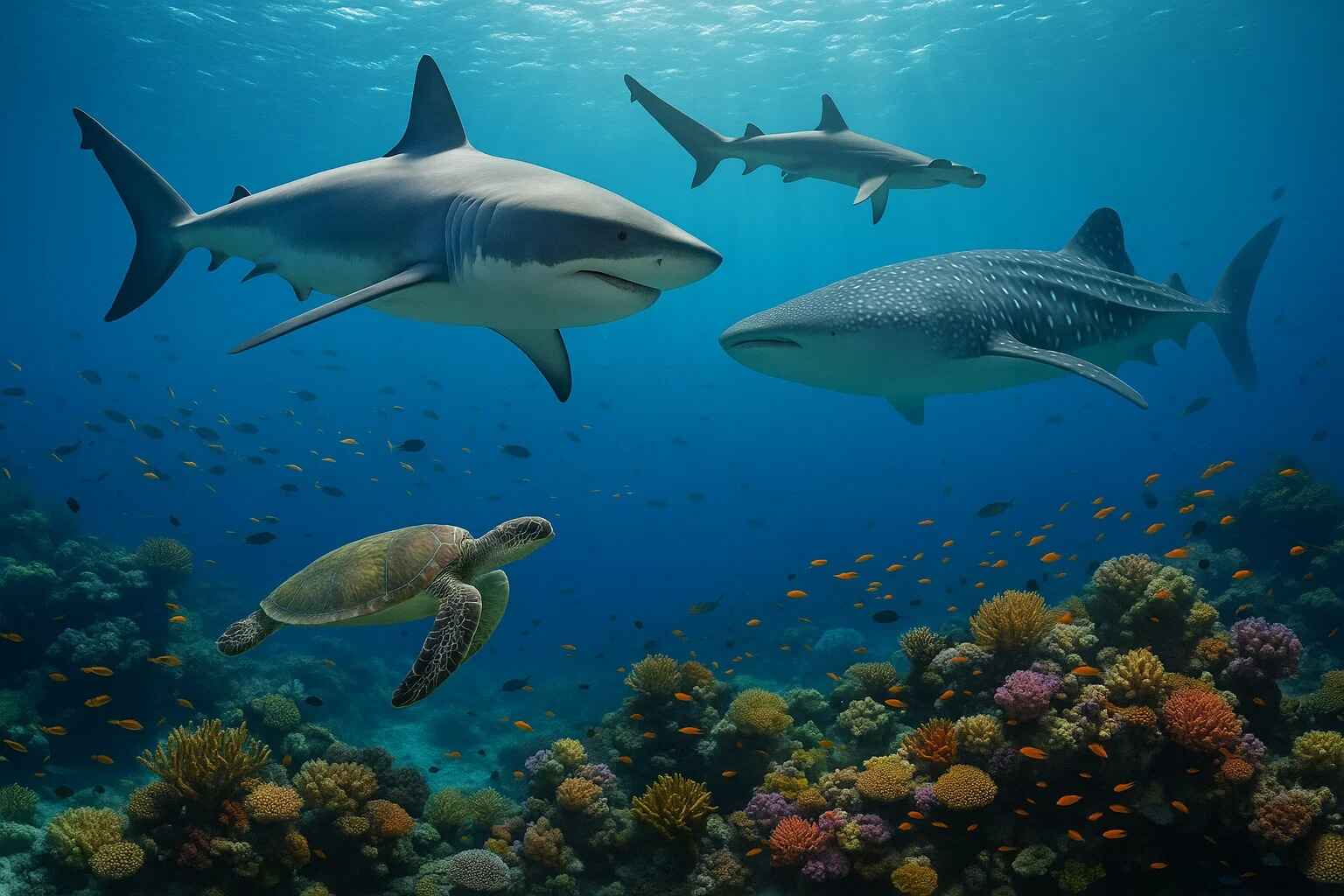Blog
Essential Info About Southwest Florida International Airport for Your Trip

Introduction
Southwest Florida International Airport (RSW) is more than just a gateway to Florida’s sparkling coastlines and vibrant cities. Located in Fort Myers, RSW serves as a vital hub for both tourists and locals, connecting the region to destinations across the United States and beyond. Whether you’re drawn by the Gulf Coast’s sun-drenched beaches or exploring Florida’s bustling shopping and leisure hubs, RSW is often the first step in your adventure.
This modern airport prides itself on offering a seamless travel experience, with efficient services and amenities designed to cater to every traveler’s needs. Planning your travel through Southwest Florida International Airport? Here’s everything you need to know about its facilities, flights, nearby attractions, and travel tips. From parking options to hidden gems in the terminal, this guide has you covered, ensuring your journey through RSW is as smooth as possible.
Whether you’re a frequent flyer or planning your first visit to the area, this comprehensive guide will help you make the most of your experience at Southwest Florida International Airport. Sit back, relax, and discover everything this airport has to offer.
History and Overview of Southwest Florida International Airport
Southwest Florida International Airport officially opened its doors in May 1983, replacing the smaller Page Field as the region’s primary airport. Strategically located in Lee County, its inception aimed to accommodate the growing demand for air travel in Southwest Florida. Today, RSW serves over 10 million passengers annually, making it one of the busiest airports in Florida.
What sets RSW apart is its focus on efficiency and sustainability. The airport is designed for seamless passenger flow, with one main terminal and user-friendly layouts. Additionally, recent expansions have incorporated eco-friendly features including energy-efficient systems and recycled materials in construction. Its single-runway design may seem modest, but it is one of the longest commercial runways in the country, capable of handling large, modern aircraft.
For international travelers, RSW offers customs and immigration facilities, ensuring smooth processing for those arriving from abroad. This makes it a convenient choice for both domestic and international itineraries alike.
Key Points:
- Located in Fort Myers, serving Lee County and surrounding areas.
- Opened in 1983 to meet increasing travel demands.
- Handles over 10 million passengers annually.
Airlines and Destinations
RSW connects passengers to more than 50 nonstop destinations across the United States, Canada, and Europe. Some of the most popular routes include flights to New York, Chicago, Atlanta, and Boston. During peak travel seasons, additional international charters are available, especially to Canada and the Caribbean.
The airport is served by major airlines such as:
- Delta Air Lines
- American Airlines
- Southwest Airlines
- JetBlue Airways
- United Airlines
Seasonal services also bring additional route options, catering to Florida’s booming tourism market. Travelers can expect convenient connections to major hubs, making it easier to travel across the globe from this regional airport.
Parking Options at RSW
Parking at Southwest Florida International Airport is straightforward, with multiple options to suit every need and budget:
-
Short-term Parking
Ideal for those picking up or dropping off passengers, short-term parking is located adjacent to the terminal for maximum convenience. -
Long-term Parking
If you’re leaving your vehicle for an extended period, the long-term parking lot offers affordable rates with complimentary shuttle service to the terminal. -
Economy Parking
For budget-conscious travelers, the economy lot provides a cost-effective solution. Although slightly farther from the airport, shuttles operate regularly. -
Curbside Parking for Drop-Offs and Pickups
While not a parking option per se, curbside drop-offs and pickups are efficient thanks to the airport’s streamlined traffic flow.
Pro Tip:
Pre-book parking during busy seasons to ensure a hassle-free experience and save time.
Amenities at Southwest Florida International Airport
RSW might be a regional airport, but it doesn’t skimp on traveler amenities. Whether you’re looking to grab a quick bite or relax before your flight, there’s something for everyone.
-
Dining Options
From fast-food chains like Starbucks and Dunkin’ to sit-down options such as Shula’s Bar & Grill, the airport features a variety of eateries. Many restaurants focus on fresh, local ingredients to give out-of-staters a taste of Florida. -
Shopping Opportunities
Forgot a souvenir? Airport shops like Beaches Gift Shop and Travelmart carry local goodies, travel essentials, and unique gifts. Duty-free stores are also available for international travelers. -
Lounges and Relaxation
While RSW doesn’t currently offer airline lounges, its spacious seating areas provide comfort and relaxation. Charging stations are widely accessible for business travelers. -
Wi-Fi and Connectivity
Free Wi-Fi is available throughout the airport, keeping you connected without extra charges. -
Pet Relief Areas
Traveling with a furry friend? Designated pet relief areas are located conveniently near the terminal entrances.
Tips for a Smooth Experience
- Arrive at least two hours before domestic flights and three hours for international travel.
- Consider downloading the airport’s mobile app for real-time updates on flight schedules and parking availability.
- Take advantage of curbside check-in services to save time during rush hours.
For families, special accommodations such as elevators, wide aisles, and attentive staff ensure stress-free travel with young kids or elderly passengers.
Nearby Attractions
One of RSW’s biggest draws is its proximity to Southwest Florida’s stunning beaches and attractions. If you have time to spare before or after your flight, consider exploring:
- Fort Myers Beach (located 16 miles away): Relax along the shores, or explore the vibrant beachfront shops.
- Sanibel Island (25 miles away): Known for its seashell-strewn beaches and wildlife refuges.
- Downtown Fort Myers (15 miles away): A hub for dining, art galleries, and historic tours.
Whether you’re traveling as a family or solo, these nearby spots ensure your trip starts or ends on a high note.
Sustainability Initiatives at RSW
Sustainability is a priority at Southwest Florida International Airport. Initiatives include:
- The use of reclaimed water for landscaping.
- Installation of energy-efficient systems in the terminal.
- Implementation of solar-powered lighting in parking facilities.
By traveling through RSW, you’re contributing to an airport striving to achieve greener operations without sacrificing convenience.
Future Developments at RSW
Exciting expansion plans are underway at RSW to enhance passenger experience. Construction of a new terminal, additional gates, and expanded food courts are in the pipeline. These developments aim to accommodate rising passenger numbers without compromising comfort or efficiency.
Frequently Asked Questions (FAQs)
What airlines operate at Southwest Florida International Airport?
RSW is served by major carriers such as Delta, American Airlines, United, JetBlue, and Southwest. Seasonal flights with charters are also available for international destinations.
How far is Fort Myers Beach from RSW?
Fort Myers Beach is approximately 16 miles from the airport, about a 30-minute drive depending on traffic conditions.
Are there lounges available at RSW?
Currently, RSW does not have airline lounges, but its spacious seating areas and modern amenities ensure a comfortable waiting experience.
Is parking available for long durations at RSW?
Yes, long-term parking is available at RSW with a complimentary shuttle service to the terminal. Economy parking is also an affordable option.
Does RSW offer international flights?
Yes, RSW handles international flights, especially to destinations in Canada, Europe, and the Caribbean. Customs facilities are available for arriving passengers.
Can I bring pets through RSW?
Yes, RSW is pet-friendly, with designated pet relief areas near the entrances for your convenience.
Are there sustainable practices in place at this airport?
Yes, RSW emphasizes eco-friendly initiatives, including energy-efficient systems and solar-powered lighting in some areas.
Where can I find dining options at the airport?
Dining options are located throughout the terminal, ranging from grab-and-go cafes to sit-down restaurants offering local cuisine.
What’s the best time to arrive at RSW before my flight?
For domestic flights, arrive two hours ahead. For international flights, three hours is recommended to accommodate security and customs.
Conclusion
Southwest Florida International Airport stands out as a traveler-friendly hub in Florida’s bustling aviation network. With its seamless mix of convenience, modern amenities, and thoughtful sustainability efforts, RSW ensures a pleasant experience from start to finish. Whether you’re exploring the beautiful Gulf Coast or jetting off to another destination, this airport is a gateway worth knowing.
By planning ahead, utilizing amenities, and exploring the area’s nearby attractions, you can make the most of your time at RSW. Next time your travels take you to the Sunshine State, consider Southwest Florida International Airport for a stress-free and enjoyable flying experience. Safe travels!
How to Write a Book: Complete Step-by-Step Guide for Beginner
Blog
Euro 2024: Discover What Awaits in Europe’s Biggest Football Event

Introduction
Euro 2024, the highly anticipated UEFA European Football Championship, is set to captivate football fans across the globe. Taking place in Germany from June 14 to July 14, 2024, this prestigious tournament promises thrilling matches, unforgettable moments, and a celebration of European football excellence. With 24 nations competing for the ultimate prize, Euro 2024 will showcase the best talents, strategies, and rivalries in the sport.
This comprehensive guide dives into everything you need to know about Euro 2024—its schedule, venues, participating teams, and historical significance. Whether you’re planning to attend the event or follow it from home, this article will prepare you to experience every triumph and heartbreak of the competition. Get ready to explore the history, format, key players, and much more as we count down to one of football’s largest spectacles.
The History of the UEFA European Championship
The UEFA European Championship, often referred to as “the Euros,” has been a staple of international football since 1960. It was created to bring European nations together through sport, fostering unity and friendly competition.
- Origins: The idea for the tournament was first proposed by Henri Delaunay, a French administrator, in the 1920s.
- First Edition: The inaugural tournament in 1960 featured only four teams, with the Soviet Union taking home the trophy.
- Expansion: Over the decades, the competition grew to include more teams. The 1996 edition introduced the 16-team format, while the 2016 tournament expanded further to 24 nations.
- Legacy: Iconic moments, such as Denmark’s unexpected victory in 1992 and Greece’s Cinderella run in 2004, have cemented the tournament as one of the most exciting in football.
Euro 2024 continues this proud tradition, promising another chapter of unforgettable memories.
Format of Euro 2024
The format for Euro 2024 ensures a captivating and competitive structure. Here’s how the tournament is organized:
- Group Stage
-
- 24 teams are divided into six groups of four.
- Each team plays three matches, and the top two from each group, along with the four best third-placed teams, advance to the knockout stage.
- Knockout Stage
-
- The round of 16, quarter-finals, semi-finals, and final are all single-elimination games.
- If a match is tied after 90 minutes, extra time and, if necessary, penalty shootouts decide the winner.
This format ensures high stakes from the group matches to the final, keeping fans on the edge of their seats.
Host Venues for Euro 2024
Germany will serve as the host for Euro 2024, showcasing an impressive roster of cities and stadiums.
- Berlin – Olympiastadion (final venue)
- Munich – Allianz Arena
- Hamburg – Volksparkstadion
- Cologne – RheinEnergieStadion
- Frankfurt – Deutsche Bank Park
- Leipzig – Red Bull Arena
- Stuttgart – Mercedes-Benz Arena
- Dortmund – Signal Iduna Park
- Gelsenkirchen – Veltins-Arena
- Düsseldorf – Merkur Spiel-Arena
Each venue offers world-class facilities and the opportunity to experience football amid unique cityscapes, history, and local cultures.
Participating Teams at Euro 2024
The 24 teams competing in Euro 2024 will include qualifiers from across Europe, based on UEFA’s qualification process. Automatic qualification is granted to Germany as the host nation.
Expected powerhouses include:
- France – Reigning FIFA World Cup finalists.
- Italy – Defending Euro 2020 champions.
- Spain – Known for its technical brilliance.
- England – Hungry to end their long trophy drought.
Smaller nations like Scotland and Iceland may also steal the spotlight, building on their underdog successes in previous tournaments.
Key Players to Watch in Euro 2024
Some of the world’s finest footballers will take center stage at Euro 2024. Keep an eye out for these potential game-changers:
- Kylian Mbappé (France) – Speed, skill, and clinical finishing make him a constantly feared forward.
- Erling Haaland (Norway) – A goal machine, capable of turning matches with raw power.
- Jude Bellingham (England) – The young midfielder’s versatility will be pivotal for England.
- Pedri (Spain) – The creative playmaker could lead Spain’s midfield resurgence.
These players epitomize football brilliance and are set to deliver memorable performances.
How to Watch Euro 2024 Across the Globe
Viewing Euro 2024 from home has never been easier, thanks to extensive broadcasting rights and streaming services.
- Television: Major networks like BBC (UK), ESPN (US), and Rai (Italy) will cover the matches.
- Streaming: Platforms such as UEFA.tv and local broadcasters’ apps offer streaming options.
- Tickets: For those attending in person, UEFA’s official portal provides reliable ticketing options.
Plan your viewing experience early to ensure you don’t miss out on the excitement.
Importance of Euro 2024 in Global Football
Euro 2024 is more than just a tournament—it’s a celebration of the unifying spirit of football. From inspiring future generations to showcasing tactical advancements, the Euros play a vital role in shaping the sport’s global landscape.
FAQs About Euro 2024
When does Euro 2024 start and finish?
Euro 2024 begins on June 14 and culminates with the final on July 14 in Berlin. The tournament spans an action-packed month of football.
How many teams are participating in Euro 2024?
A total of 24 teams will compete in Euro 2024. They will fight their way through the group stage and knockout rounds to crown the ultimate winners.
Where can I buy tickets for Euro 2024?
Tickets are available through the UEFA official website. Demand is high, so securing tickets early is recommended. Packages for single matches and entire groups are available.
Which country has won the most Euros?
Germany and Spain hold the joint record for the most Euro wins, with three titles each.
How can I stream Euro 2024 online?
Streaming options vary by region. Popular platforms include UEFA.tv, ESPN+, and BBC iPlayer. Check local broadcasters’ apps for additional access.
What is unique about Euro 2024?
Euro 2024 brings the tournament back to a single host country, Germany, after multiple nations co-hosted Euro 2020.
Who are the favorites to win Euro 2024?
Favorites include France, England, and Germany, with Belgium and Spain as potential dark horses.
How has the Euro format evolved over time?
From just four teams in 1960 to 24 today, the Euros continually expanded to increase inclusion and competition.
Conclusion
Euro 2024 is set to be a spectacular showcase of European football, uniting fans worldwide in celebration of the sport they love. Whether you’re cheering from the stands at Berlin’s Olympiastadion or following the action from your living room, the tournament promises unforgettable drama, skill, and passion.
Plan ahead, mark your calendars, and immerse yourself in the excitement of Euro 2024. From historic rivalries to emerging stars, every match has the potential to create moments that will live forever in football history. Don’t miss out on this thrilling chapter of European football!
Free Fire PC Utility: Your Complete Guide to an Enhanced Gaming Experience
Blog
Sharks: Unveiling the Ocean’s Most Fascinating Predators

Introduction
Sharks have long fascinated humans with their sleek bodies, razor-sharp teeth, and powerful presence. These apex predators dominate oceans across the globe, embodying a delicate balance between fear and admiration. Far from being mindless hunters, sharks are vital to ocean ecosystems, maintaining the health of marine populations. With over 500 species varying in size and characteristics, every shark contributes uniquely to marine biodiversity.
However, these incredible creatures face numerous challenges, including overfishing, habitat destruction, and a tarnished reputation due to sensationalized media portrayals. Learning about sharks helps us dispel myths and appreciate their crucial role in maintaining a healthy underwater world.
This article dives into the fascinating world of sharks, exploring their biology, behavior, significance, and the threats they face today. By the end, you’ll understand why sharks deserve protection and respect—and why they are more than the villains Hollywood often depicts them as.
What Makes a Shark Unique?
Sharks belong to a family of animals known as elasmobranchs, a group that includes rays and skates. Unlike fish with bony skeletons, sharks have cartilage-based skeletons, making them both lighter and more flexible. Their striking adaptability has allowed them to persist for over 400 million years, outliving even the dinosaurs.
Sharks are equipped with a range of extraordinary adaptations, such as:
- Ampullae of Lorenzini: These are tiny receptors that sense electric fields, helping sharks locate prey even in murky water.
- Replaceable Teeth: Sharks grow thousands of teeth during their lifetimes. If one falls out, another is ready to take its place.
- Streamlined Bodies: Their bodies minimize resistance, enabling efficient movement through water.
These evolutionary advantages make sharks apex predators, ensuring they remain at the top of their food chains.
Common Shark Species and Their Traits
With over 500 species, sharks exhibit incredible diversity. Below are some of the most recognizable species and their unique characteristics:
- Great White Shark
Known for its powerful bite and Hollywood fame, this shark can grow up to 20 feet long. Great whites are highly efficient hunters, often preying on seals and sea lions.
- Whale Shark
The largest known shark species, whale sharks are gentle filter-feeders that primarily consume plankton. These ocean giants can grow up to 40 feet or more.
- Hammerhead Shark
Hammerheads are known for their oddly shaped heads, which improve their senses. Their wide-set eyes allow better vision, while their nostrils are perfect for detecting prey.
- Tiger Shark
These opportunistic eaters consume a little bit of everything. Often called “the garbage cans of the sea,” tiger sharks can eat anything from fish to car tires.
- Bull Shark
Known for their aggressive nature, bull sharks can survive in both saltwater and freshwater environments.
Each species plays a different role in maintaining the balance of oceanic ecosystems, proving that biodiversity is vital in marine environments.
How Sharks Contribute to Marine Ecosystems
Sharks are essential to oceans’ health. As apex predators, they regulate populations of fish and other marine life, preventing overpopulation of certain species. This ensures the health of coral reefs and seagrass meadows, which rely on balanced ecosystems to thrive.
Highlights of their ecological roles include:
- Controlling prey populations
- Preventing disease outbreaks by preying on the weakest and sickest creatures
- Maintaining food chain balance
The impacts of losing sharks could ripple throughout the marine food web, leading to unpredictable and negative consequences for oceans worldwide.
Dispelling Myths About Sharks
Movies and sensationalized shark attack reports have cemented sharks as ruthless killers in popular imagination. However, the reality is vastly different. On average, fewer than 10 people die annually from shark attacks—a number dwarfed by encounters with other wildlife like cows or bees.
Sharks generally avoid humans, with most attacks occurring due to mistaken identity (e.g., mistaking surfers for seals). Understanding and respecting sharks’ natural behaviors can prevent most negative encounters.
Threats to Shark Populations
Sharks face a range of challenges stemming from human activities. Key threats include:
- Overfishing: Millions of sharks are killed each year, often for their fins, in the cruel practice of finning.
- Bycatch: Many sharks are accidentally caught in fishing nets targeting other species.
- Habitat Loss: Polluted or destroyed marine habitats reduce sharks’ ability to reproduce and hunt.
- Climate Change: Warming oceans affect many shark species’ migratory and feeding patterns.
Efforts To Protect Sharks
Conservation initiatives play a critical role in preserving shark populations. Policies such as sustainable fishing regulations and marine protected areas aim to minimize human impact.
Organizations worldwide, such as the World Wildlife Fund (WWF), work on projects to promote research, education, and awareness. You can support these efforts by choosing sustainable seafood and staying informed about marine conservation.
Why Sharks Deserve Our Respect
Sharks are far more than the aggressors they are sometimes depicted as. They are complex, intelligent creatures evolved perfectly for their environments. Their presence is a testament to nature’s ingenuity and adaptability, reminding us of the interconnectedness of all life on Earth.
Acknowledging their importance encourages us to challenge stereotypes, reconsider our relationship with oceans, and act in ways that secure a sustainable future—for sharks and humans alike.
FAQs About Sharks
Are sharks dangerous to humans?
Despite their fearsome reputation, sharks pose little danger to humans. Attacks are extremely rare and usually result from mistaken identity. Most sharks prefer to avoid humans altogether.
How can I help protect sharks?
You can support shark conservation by avoiding shark products, like shark fin soup, and donating to organizations dedicated to protecting marine life. Supporting legislation for sustainable fishing also helps.
What do sharks eat?
Sharks’ diets largely depend on their species. Some are carnivorous, consuming fish, seals, or smaller sharks, while others, like the whale shark, feed on plankton and small crustaceans.
How many species of sharks exist?
There are over 500 known species of sharks, with more being discovered as ocean exploration advances. These range from the small pygmy shark to the massive whale shark.
Why are sharks important to ecosystems?
Sharks maintain ocean balance by keeping prey species in check, preventing overpopulation and preserving biodiversity. Without them, ecosystems could collapse.
What are the biggest threats to sharks?
The primary threats include overfishing, habitat destruction, bycatch, and climate change. Shark finning, in particular, is a devastating practice contributing to population declines.
Can sharks live in freshwater?
Certain species, like bull sharks, can survive in freshwater due to their unique ability to regulate salt levels. Most sharks, however, are confined to saltwater environments.
How old are sharks as a species?
Sharks have existed for over 400 million years—longer than dinosaurs—making them one of Earth’s most ancient creatures.
Conclusion
Sharks exemplify the marvels of evolutionary adaptation and the complexity of life beneath the ocean surface. By understanding their significance, dispelling common misconceptions, and supporting conservation, we can ensure these vital predators not only survive but thrive in our waters.
Protecting sharks is about more than saving a single species; it’s about safeguarding the health and future of the oceans they help sustain. Now is the time to shift our perspectives, take action, and help preserve these astonishing creatures for generations to come.
https://theusacorner.com/fort-lauderdale-florida-verenigde-staten/
Blog
Kotora Melnkalne – A Detailed Exploration of Its Significance

Introduction
Have you heard about kotora melnkalne and want to learn more? If so, you’re in the right place. Kotora Melnkalne is more than just an intriguing term; it captures attention for a reason. From its origin and contextual meaning to its cultural or historical significance, there are many layers to unpack.
Whether you’re here as a curious learner, a researcher, or someone exploring a niche interest, this article will guide you through every detail about kotora melnkalne. We’ll answer questions like what it is, why it matters, and how it’s connected in various contexts.
By the time you finish reading, you’ll have a clear understanding of this topic and its broader relevance. This blog isn’t just about sharing facts; it’s about exploring a subject that deserves attention in a thorough, accessible, and engaging way.
Now, let’s get started on this deep-dive into the world of kotora melnkalne, its significance, and its layers of meaning.
What is Kotora Melnkalne?
Kotora Melnkalne is a term that holds particular significance depending on its context and usage. Broadly speaking, the phrase could represent a concept, a name, or even an idea with profound roots. Here’s how to understand it step by step.
- Definition and Meaning
The first step is understanding what kotora melnkalne stands for. Whether it’s a person, place, or cultural reference, this term encapsulates something important.
- Etymology and Origin
Breaking down the linguistic roots of “kotora melnkalne” helps uncover more about its heritage and evolution. By tracing its origin, one can discern regional or historical connections.
- General Recognition
Has the term gained popularity globally, or is it specific to certain regions or cultural niches? Awareness helps in positioning its relevance worldwide.
The Historical Significance of Kotora Melnkalne
History plays a critical role in shaping terms like kotora melnkalne. Whether tied to an event, a person, or a movement, understanding historical connections adds depth to the subject.
- Understanding its Timeline
How has kotora melnkalne evolved over the years? A glance at key milestones outlines its trajectory from origin to recognition.
- Cultural and Social Influence
Anything embedded in history often leaves a cultural or social imprint. How has this played out for kotora melnkalne? This section explores its contributions to arts, literature, or societal trends.
- Legacy and Current Standing
Even with a vibrant history, its significance today may vary. Evaluating its current standing helps showcase its adaptability and continuing value.
Kotora Melnkalne in Modern Contexts
Present-day significance often breathes fresh relevance into historical terms. Here’s how kotora melnkalne holds meaning in modern scenarios.
- Pop Culture References
Has kotora melnkalne surfaced in media, cinema, or literature recently? These are some ways that older concepts gain new life in contemporary society.
- Relevance to Current Events or Trends
Any ties between kotora melnkalne and movements, ideologies, or debates today make the term more important to study.
- Examples of Usage
Actual instances or cases where kotora melnkalne is highlighted provide readers with relatable anchors.
Exploring the Symbolism of Kotora Melnkalne
Symbolism adds richness and meaning, whether related to spirituality, culture, or personal expression. Does kotora melnkalne carry symbolic weight? If so, how does this manifest?
- Metaphorical Interpretations
Interpretations can range from metaphorical to literal. Discussing abstract meanings helps broaden perspectives.
- Spiritual or Philosophical Tie-ins
Is there a greater philosophical or spiritual essence associated with kotora melnkalne? Identifying this layer reveals deeper connections.
Kotora Melnkalne Across Languages and Regions
Regional interpretations and translations are key to understanding the universal appeal of kotora melnkalne.
- Linguistic Variations
How does kotora melnkalne change, adapt, or remain the same across languages? Learning about its universal or localized traits adds depth.
- Global Appeal and Regional Significance
How widely recognized or appreciated is kotora melnkalne beyond specific areas? Exploring cross-border relevance is key.
Benefits of Understanding Kotora Melnkalne
Appreciating kotora melnkalne on various levels enriches readers’ perspectives. But what are the inherent takeaways?
- Enhanced Cultural Awareness
Developing awareness fosters understanding and eliminates knowledge gaps.
- Connection to Broader Themes
Kotora melnkalne could tie into bigger themes like identity, belonging, or creativity.
- Practical Applications
Understanding how this concept or idea fits into daily life or specific industries ensures relevance outside academic or cultural circles.
Misconceptions About Kotora Melnkalne
Any popular or culturally significant term is prone to misinterpretations. Here’s what needs clarity about kotora melnkalne.
- Common Myths
List and debunk widespread inaccuracies for educating readers.
- Clarifying the Truth
Reinforce what kotora melnkalne actually is by juxtaposing myths and facts.
Frequently Asked Questions (FAQs)
What does kotora melnkalne mean?
Kotora melnkalne could represent a specific concept, person, or even a cultural reference. Its exact meaning often depends on the context in which it’s used.
Why is kotora melnkalne significant?
Its significance stems from historical, cultural, and modern connections. Whether serving as a symbolic or literal reference, kotora melnkalne holds layers of meaning.
Does kotora melnkalne have global relevance?
Yes, although its prominence varies by region. It has managed to captivate interest globally thanks to its layered symbolism and diverse applications.
Is there a historical backstory to kotora melnkalne?
Indeed, a comprehensive understanding unearths traces in history, heritage, and possibly folklore.
Where can I learn more about kotora melnkalne?
Dive into literature, cultural discussions, and modern media to uncover everything about kotora melnkalne.
This detailed guide ensures kotora melnkalne is presented comprehensively, highlighting its meaning, value, and relevance, both past and present.
Final Thoughts on Kotora Melnkalne
Kotora melnkalne is more than just a term—it’s a concept rich in historical, cultural, and possibly personal meaning.
- Narrowing down its essence shows how it impacts specific communities or individuals.
- Exploring different contexts reveals its versatility and thematic relevance.
By engaging with and understanding kotora melnkalne, readers don’t just learn about it—they grow their worldview and cultural horizons.
Blog
Silk Lqbo Explained: Revolutionizing Materials and Applications

Introduction
Silk lqbo is gaining traction in industries worldwide, capturing the interest of experts and enthusiasts alike. But what exactly is it, and how can it impact ongoing advancements across sectors? Whether you’ve stumbled across the term or have been actively researching it, you’ll find this guide packed with invaluable insights. From understanding what silk lqbo is to uncovering its applications and benefits, this article will give you a comprehensive look into the concept.
Discover the various ways silk lqbo is revolutionizing industries, learn about its benefits, and explore its potential for future growth. Throughout this blog, we’ll use clear, approachable language to break down even the most complex aspects into digestible bites. Stick around to see how silk lqbo could shape your work—or even the world—going forward.
Read on to grasp everything essential about silk lqbo, presented in an informative yet engaging manner designed for a global audience. Whether you’re a business professional, innovator, or curious reader, you’ll walk away with clarity and actionable insights.
What Is Silk Lqbo?
Silk lqbo refers to a cutting-edge concept that combines advanced materials technology with real-world applications. Its foundation builds on utilizing silk proteins with enhanced properties to create more robust, lightweight, and functional materials. This innovation aligns well with environmental and technological trends, where eco-conscious choices and high-performance products intersect.
While silk lqbo is a relatively new term, its implications are vast. Below are some critical features of this breakthrough:
- Sustainability: Made from renewable materials.
- Lightweight yet Durable: Combines elegance and strength.
- Versatility: Applicable in various fields, from fashion to engineering.
The concept of silk lqbo is revolutionizing how we think about materials. Its impact stretches from textiles to biomedicine, with potential in high-tech manufacturing and renewable product design. Companies are already beginning to leverage silk lqbo to create products that meet sustainability goals without sacrificing quality.
The Origins of Silk Lqbo
Understanding where silk lqbo originates from provides valuable context for its growing significance. Derived from silk protein fibroin, the core ingredient of this material is modified at the molecular level to offer enhanced functionality.
Key Facts About Its Creation:
- The silk protein is extracted, purified, and treated to gain flexibility in usage.
- Advanced techniques like molecular gene editing and protein manipulation enhance its strength.
- The process is eco-friendly, reducing reliance on synthetic alternatives.
This innovation grew out of the need for sustainable solutions that don’t compromise on quality. Researchers believe it represents a pivotal shift in how we design systems and tools across disciplines, from design engineering to healthcare.
Applications of Silk Lqbo in Textiles
One of silk lqbo’s pioneering uses is in fabric production. Its integration into textiles offers unique benefits that redefine industry standards.
Why Silk Lqbo Stands Out in Fashion:
- Eco-Conscious Options:
-
- Lower carbon footprint compared to synthetic alternatives.
- Fully biodegradable materials.
- Improved Durability:
-
- Resistant to wear and tear.
- Can withstand repeated washing without losing integrity.
- Enhanced Comfort:
-
- Hypoallergenic properties.
- Delivers excellent temperature regulation.
This revolutionary material is being embraced by high-end fashion brands aiming to balance luxury with sustainability. Additionally, its durability has sparked interest in functional clothing lines, such as activewear and outerwear.
How Silk Lqbo Is Advancing Medicine
The medical sector has shown immense interest in silk lqbo due to its versatility and compatibility with human tissue. Some potential uses include:
- Creating robust yet lightweight medical sutures.
- Developing biocompatible implants with fewer rejection rates.
- Building scaffolds for tissue regeneration.
These developments make silk lqbo not only practical but also lifesaving. With ongoing clinical trials, it’s clear the material has significant potential in transforming patient care standards.
Benefits of Silk Lqbo in Product Design
Silk lqbo’s integration into modern manufacturing showcases its ability to enhance product functionality. Whether used in industrial design, automobile interiors, or packaging solutions, it exemplifies versatility.
Standout Features for Product Designers:
- Resistant to extreme environmental changes, including temperature shifts.
- Lends itself well to innovation due to customizability.
- Easily engineered for specific use cases.
From packaging solutions with biodegradable properties to machinery components with ultra-high tensile strength, silk lqbo is sure to drive exceptional innovation.
Environmental Impacts of Using Silk Lqbo
Sustainability remains a key motivator in the adoption of silk lqbo. Compared to oil-based synthetics, it boasts multiple eco-advantages:
- Requires less energy-intensive manufacturing.
- Completely biodegradable, adding zero waste to landfills.
- Promotes the replacement of non-renewable resources.
These properties make it a particularly attractive solution for industries looking to reduce their environmental footprint while pushing the boundaries of material science.
The Future of Silk Lqbo
What lies ahead for silk lqbo? Experts believe its role will only expand in the coming years. Key trends point toward global adoption in sectors beyond textiles and medicine:
- Technology: Development of lightweight electronics.
- Sustainability Efforts: Widespread use in green energy solutions.
- Space Exploration: Possible applications in creating efficient, reusable materials for long-term space travel.
Silk lqbo represents not just a product but a platform for global innovation.
FAQs About Silk Lqbo
What Exactly Is Silk Lqbo?
Silk lqbo refers to highly engineered material derived from natural silk proteins, modified to offer superior performance across industries like fashion, medicine, and manufacturing.
Is Silk Lqbo Eco-Friendly?
Yes, silk lqbo is an eco-friendly option. It uses renewable resources and generates minimal waste compared to synthetic materials.
Where Is Silk Lqbo Used Today?
Its uses range from luxury textiles to medical devices and even industrial design. Emerging fields include tech components and sustainable packaging.
Can Silk Lqbo Be Scaled for Mass Production?
Yes, advancements in production techniques have allowed silk lqbo to be scaled up, making it economically viable for multiple industries.
What Makes Silk Lqbo Stand Out?
Its biodegradability, strength, and versatility set it apart from traditional options, offering sustainable solutions across applications.
Final Thoughts
Silk lqbo is a game-changer in material science, promising innovations across diverse fields. From medical breakthroughs to sustainable product design, this concept has endless potential for reshaping industries. Adopting it could lead to more resilient, eco-conscious solutions, proving that innovation and sustainability can go hand in hand. Whether you’re a business leader, industry expert, or curious mind, the growth of silk lqbo is worth keeping an eye on. The world is witnessing the dawn of a material that could redefine how we live and work.
-
Blog6 days ago
麻 豆 传 媒体: A Comprehensive Insight into the Media Powerhouse
-

 Tech7 days ago
Tech7 days agoOKCFOZ4.5L Installation Guide: Complete Steps, Troubleshooting, and Maintenance for Fixing OHILFOZ4.5L Issues
-

 Lifestyle7 days ago
Lifestyle7 days agoImagesize:地藏王菩薩 1920×1080: A Deep Dive into Digital Spiritual Art
-

 Tech7 days ago
Tech7 days agoThe Ultimate Guide about Danny Kilcannon from varsitygaming: How VarsityGaming Revolutionized Gaming Education





